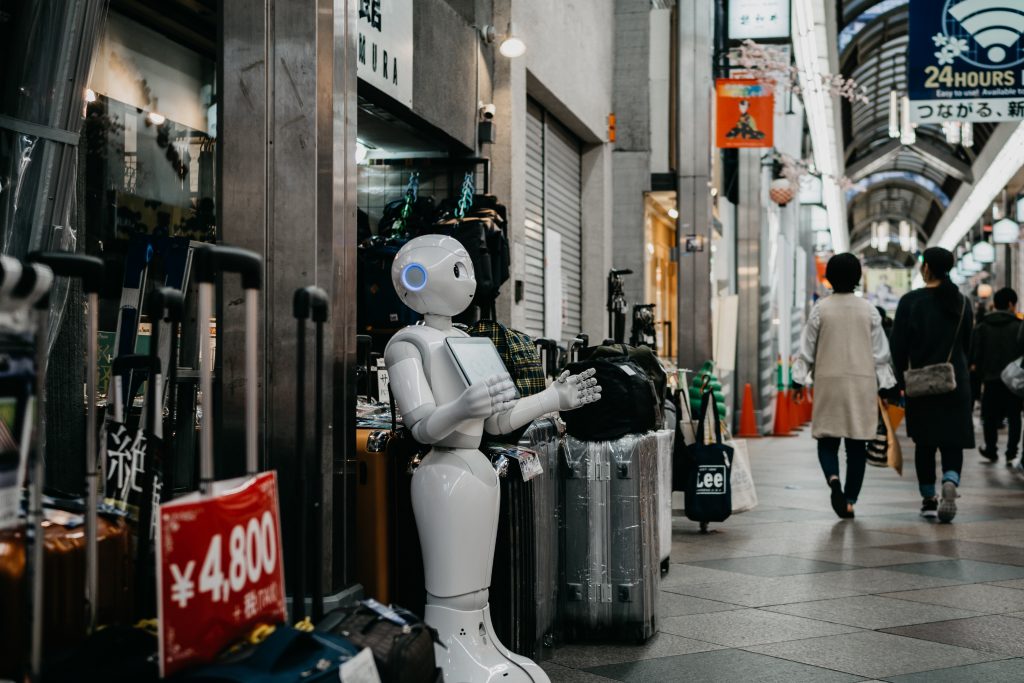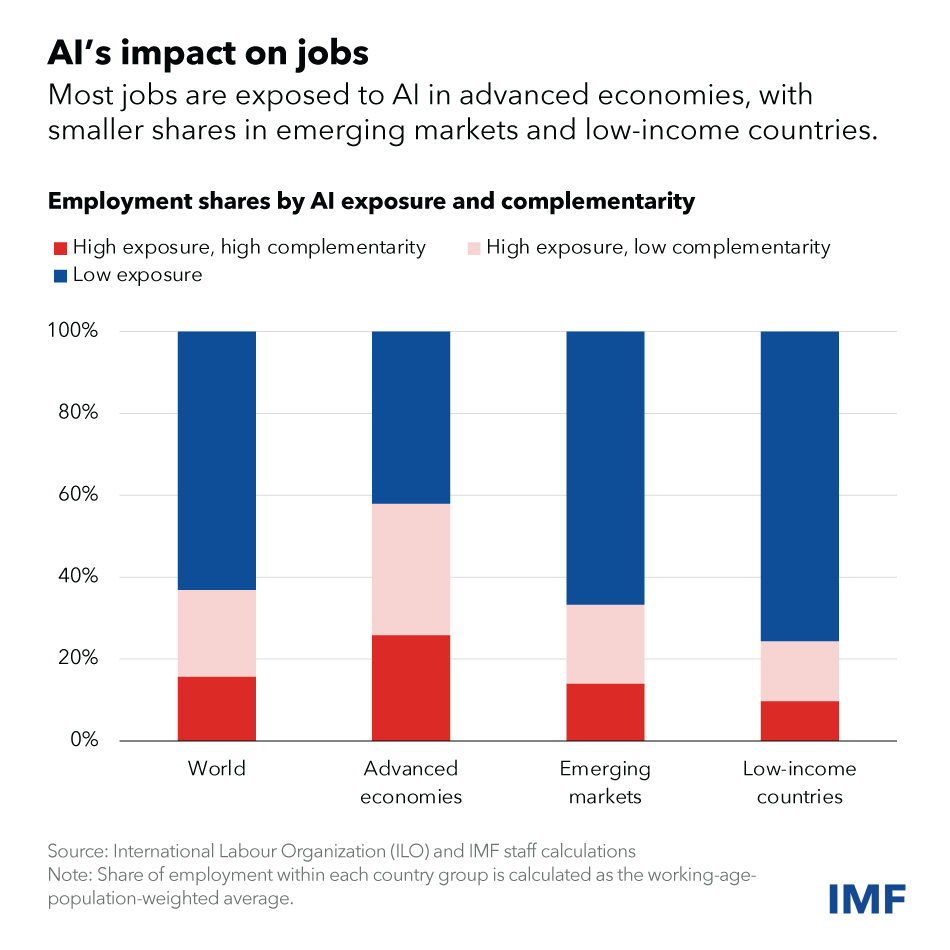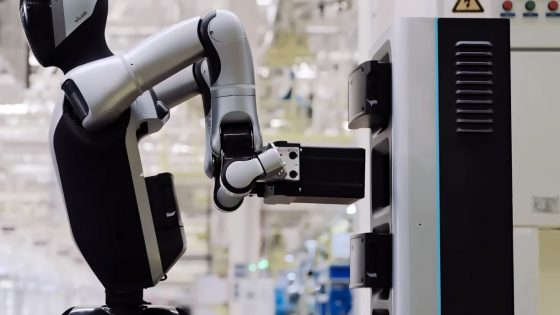Artificial intelligence will affect 40 % jobs worldwide

We are on the cusp of a technological revolution that could accelerate productivity, fuel growth and raise incomes around the world. But they could also replace jobs and increase inequality.
The rapid advancement of artificial intelligence has captivated the world, generated excitement and concern, and raised important questions about its potential impact on the global economy. The net effect is difficult to predict, as AI will affect economies in complex ways. But we can say with certainty that we will have to create a series of policies that will allow us to safely harness the great potential of artificial intelligence for the benefit of humanity.
Changing the nature of work
In a new analysis, the International Monetary Fund (IMF) examines the potential impact of artificial intelligence on the global labor market. Many studies have predicted the likelihood that artificial intelligence will replace jobs. But we know that in many cases, AI is likely to complement human work. The International Monetary Fund's analysis covers both forces.
The findings are striking: nearly 40 percent of the world’s jobs are at risk of being affected by artificial intelligence. In the past, automation and information technology have typically affected routine tasks. One of the things that sets AI apart is its ability to impact high-skilled jobs. As a result, developed economies face greater risks from AI – but also greater opportunities to reap its benefits – than emerging and developing economies.
For developed economies, the IMF predicts that artificial intelligence can affect about 60 percent of jobs. About half of exposed jobs can benefit from the inclusion of artificial intelligence, increasing productivity. For the other half, UI applications can perform key tasks currently performed by humans, which could reduce the demand for labor, leading to lower wages and less hiring. In the most extreme cases, some of these jobs may disappear.
In contrast, in emerging markets and low-income countries, UI exposure is expected to be 40 and 26 percent, respectively. These findings suggest that emerging market and developing economies face less direct disruption from AI. At the same time, many of these countries lack the infrastructure or skilled workforce to take advantage of UI, raising the risk that the technology could eventually increase inequality between countries.

UI could also affect income and wealth inequality within countries. We may see polarization within income classes, with workers who can take advantage of AI seeing productivity and wages rise while those who can't fall behind. Research shows that artificial intelligence can help less experienced workers increase their productivity more quickly. Younger workers may find it easier to take advantage of opportunities, while older workers may struggle to adapt.
The effect on income will largely depend on the extent to which UI complements high-income workers. If UI significantly supplements higher-income workers, it may lead to a disproportionate increase in their income. In addition, the increase in productivity of firms adopting AI is likely to increase capital returns, which may also benefit high-income earners. Both phenomena could increase inequality.
In most scenarios, AI is likely to increase overall inequality, a worrying trend that policymakers need to proactively address to prevent the technology from further increasing social tensions. It is crucial that countries establish comprehensive social safety nets and offer retraining programs to vulnerable workers. By doing so, we can make the transition to artificial intelligence more inclusive, protect livelihoods and limit inequality.
An inclusive world powered by artificial intelligence
Artificial intelligence is being incorporated into businesses around the world at an alarming rate, which only further highlights the need for policymakers to act.
To help countries design the right policies, the IMF has developed an AI Readiness Index that measures readiness in areas such as digital infrastructure, human capital and labor market policies, innovation and economic integration, and regulation and ethics.
For example, the human capital and labor market policies component assesses elements such as years of schooling and labor market mobility, as well as the share of the population included in social safety nets. The regulations and ethics component assesses the adaptability of the country's legal framework to digital business models.
Based on the index, IMF employees assessed the preparedness of 125 countries. The findings show that wealthier economies, including developed and some developing economies, are generally better prepared to adopt AI than low-income countries, although there are significant differences between countries. Singapore, the United States of America and Denmark achieved the index's highest scores based on strong results in all four categories monitored.
Based on the findings of the AI Readiness Index, developed economies should prioritize innovation and integration of AI while developing robust regulatory frameworks. This approach will foster a safe and responsible UI environment and help maintain public trust. For emerging and developing economies, laying a solid foundation through investment in digital infrastructure and a digitally skilled workforce should be a priority.
The age of artificial intelligence is upon us, and it is still within our power to ensure that it brings prosperity for all.






























